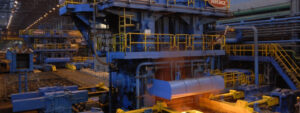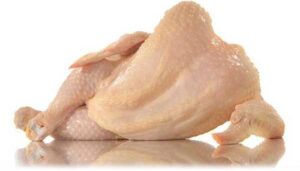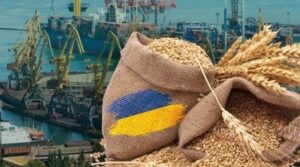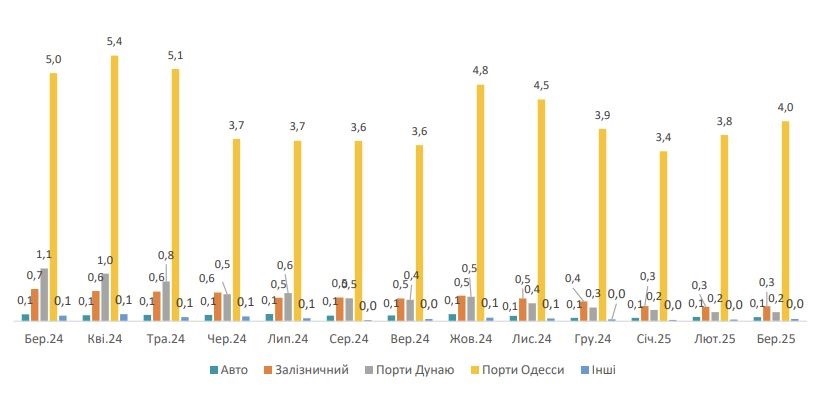
According to a recently published report by Deutsche Bank, the highest increase in rents for three-room apartments in European city centers between 2020 and 2025 was recorded in Southern and Eastern Europe, reaching 206%. These figures are from a study covering 67 cities worldwide, including 28 in Europe.
According to Eurostat, housing prices in the EU rose by 27.3% quarter-on-quarter (from Q1 2020 to Q1 2025), while rents rose by 12.5% between June 2020 and June 2025. However, growth exceeded the average in central city areas.
The most expensive and cheapest cities in 2025:
The highest rental growth (2020–2025):
Overall, the findings show that Southern and Eastern Europe have lost their relative affordability in terms of housing rentals, while the major financial and political centers of Western and Northern Europe remain the most expensive, but affordability in Eastern Europe is declining rapidly.

Novokramatorsk Machine-Building Plant (NKMZ, Kramatorsk, Donetsk region) plans to increase production and sales by 81.5% in 2025 compared to 2024, to UAH 2.08 billion.
The relevant plans are contained in the company’s financial report for 2024, published in the NSSMC disclosure system.
“The company’s activities in 2025 will, with a high degree of probability, be limited. Based on these assumptions for 2025, production plans have been approved for 12,700 tons of machinery and equipment for the metallurgical, mining, construction, lifting, loading, and unloading industries, as well as spare parts,” the report says.
NKMZ notes that this year, the plant’s metallurgical production plans include the manufacture of 21.78 thousand tons of liquid steel, 120 tons of liquid pig iron, 1.1 thousand tons of steel castings, and 100 tons of pig iron, as well as 15.84 thousand tons of forgings.
“The development of projects for the promising further development of the enterprise, the formation of measures aimed at the successful operation of the enterprise, the creation of new equipment and research and development, the technical re-equipment and introduction of resource-saving technologies will begin after the end of the war in Ukraine,” the plant said.
At the same time, measures are planned for 2025 to conduct a supervisory audit of the quality management system by ISOaccelerator to confirm and extend the validity of the ISO 9001:2015 certificate.
The marketing strategy of PJSC NKMZ for the current year is to maintain and expand strategic market segments and increase its presence in Eastern, Central, and Western Europe, and Central Asia.
According to the report, in 2024, the main market segments for NKMZ PJSC products were Asia (54.4% of sales), Europe (24.9%), and Ukraine (17.9%).
In terms of total sales in monetary terms, 55.2% were rolling rolls, 18.1% were metallurgical and rolling equipment, 7.3% were mining and ore equipment, and other equipment accounted for 19.4%.
Investments in production development last year amounted to UAH 28.15 million.
As reported, in 2024, NKMZ’s net income increased 3.2 times compared to the previous year, reaching UAH 1 billion 146 million, with exports to European and Asian countries accounting for UAH 941.3 million (82%). Net profit amounted to UAH 36.33 million (in 2023, the company reported a loss of UAH 856.93 million).
At the same time, in 2024, Slovakia, Lithuania, Egypt, and Luxembourg joined Uzbekistan, Kazakhstan (where exports fell 12.3 times over the year), and India (where exports grew 31 times) as the largest importers of NKMZ products. Supplies within Ukraine increased 5.2 times to UAH 204.6 million.
NKMZ, whose capacity was forced to be mothballed with the start of the full-scale military invasion of Ukraine by the Russian Federation, began to partially resume operations in October 2023.
NKMZ is a city-forming enterprise in Kramatorsk, the largest in Ukraine in the production of rolling, metallurgical, forging and pressing, hydraulic, mining, lifting and transport, hydraulic and railway equipment.
Before the war in 2021, the company’s net income exceeded UAH 6 billion.
At the beginning of 2023, the average number of employees exceeded 7,200, and at the beginning of 2025, it was 5,660.
ASIA, EUROPE, EXPORT, NKMZ, PRODUCTION

Support is lowest in France, Spain and Poland, while 21% back authoritarian rule under certain circumstances
Only half of young people in France and Spain believe that democracy is the best form of government, with support even lower among their Polish counterparts, a study has found.
A majority from Europe’s generation Z – 57% – prefer democracy to any other form of government. Rates of support varied significantly, however, reaching just 48% in Poland and only about 51-52% in Spain and France, with Germany highest at 71%.
More than one in five – 21% – would favour authoritarian rule under certain, unspecified circumstances. This was highest in Italy at 24% and lowest in Germany with 15%. In France, Spain and Poland the figure was 23%.
Nearly one in 10 across the nations said they did not care whether their government was democratic or not, while another 14% did not know or did not answer.
Thorsten Faas, a political scientist at Berlin’s Free University, who worked on the study, said: “Among people who see themselves as politically to the right of centre and feel economically disadvantaged, their support of democracy sinks to just one in three.
“Democracy is under pressure, from within and without.”
The study was carried out in April and May. More than 6,700 people between the ages of 16 and 26 in Britain, Germany, France, Spain, Italy, Greece and Poland responded to the ninth annual survey by the YouGov institute for the Tui Foundation, which funds projects dedicated to youth in Europe.
Forty-eight per cent worry that the democratic system in their own country is endangered, including 61% in Germany, where the economy – Europe’s biggest – is ailing and the far right has made significant inroads, fuelled in part by increased backing from young voters.
The return of Donald Trump to the White House, the rise of China, and Russia’s full-scale invasion of Ukraine have shifted power away from Europe in the respondents’ perception, with just 42% counting the EU among the top three global players.
Despite – or perhaps because of – Brexit, the figure was highest among Britons at 50%. Of those surveyed in the UK, 73% wanted a return to the EU, while nearly half of young Europeans (47%) sought stronger ties between the EU and Britain.
The US was seen by 83% as part of the power trio, followed by China with 75% and Russia on 57%.
Rising polarisation is also driving young Europeans to the ideological fringes along with their elders, but a notable gender divide has emerged in the process.
Nearly one in five – 19% – described themselves as politically right of centre, up from 14% in 2021, while 33% called themselves centrists, 32% as leftist and 16% without any designation.
Women in Germany, France and Italy identified as progressive in higher numbers than four years ago, while young men in Poland and Greece have grown more conservative in the same period.
Support for tougher restrictions on migration has grown across the board since 2021, to 38% from 26%.
Most young Europeans expressed hope in the EU’s potential, and two in three overwhelmingly supported their country remaining in the bloc if it still was. But 39% described the EU as not particularly democratic and just 6% said their own national governments worked well, with little need for significant changes.
More than half – 53% – felt the EU was too focused on details and trivial matters. They would like the bloc to tackle the high cost of living, bolster defence against external threats and create better conditions for companies to improve the economy.
Elke Hlawatschek, the head of the Tui Foundation, said: “The European project, which has brought us peace, freedom of movement and economic progress for decades, is seen as unwieldy.”
Greek people see the strongest need for fundamental overhaul of their political system and are most sceptical about the EU, which Faas described as rooted in enduring trauma of the eurozone debt crisis that drove their country’s economy to the brink.
Despite stronger support for climate protection among young Europeans, just one in three said it should take priority over economic growth. The figure has slipped from 44% in 2021.
BREXIT, EUROPE, EUROPEAN UNION, FRANCE, GERMANY, ITALY, NEWS, Young people

The rise in energy prices as a result of the conflict in the Middle East could weaken economic growth in the eurozone and thus smooth out inflation, said Luis de Guindos, deputy head of the European Central Bank (ECB).
“The emergence of the Iranian-Israeli conflict adds some uncertainty to the dynamics of oil prices,” The Wall Street Journal quoted him as saying. It is therefore important to keep a close eye on developments in the real economy as an indicator of inflation prospects.”
According to de Guindos, the increase in duties on European exports to the United States will certainly slow down inflation in the currency bloc, including because it will weaken economic growth.
“Higher duties are expected even if bilateral negotiations are successful,” the deputy head said. The ECB cut its key policy rate in June and made it clear that it was nearing the end of its monetary easing cycle. In May, inflation in the euro area was below the 2% target.
However, de Guindos’ comments suggest that the rate may have to be cut further to keep inflation around 2%, the WSJ writes.
Source: http://relocation.com.ua/rising-energy-prices-could-weaken-economic-growth-in-europe/

INGO Insurance Company has paid UAH 3.4 million for a spoiled batch of frozen chicken products that was transported from Europe to Ukraine, the company’s website reports.
It is noted that the payment was made under a motor carrier liability insurance contract. The policy provided coverage for the risks of loss or damage to cargo.
The accident occurred during the transportation of 20 tons of frozen chicken products from Europe to Ukraine. The cargo was transported in a refrigerator at a temperature of -18°C. In Poland, the vehicle slid into a ditch and overturned. According to the police, the driver did not take into account the road conditions when making a turn.
The accident resulted in the breakdown of the refrigerator, which caused a temperature violation and damage to the cargo packaging. The carrier organized the loading of the products into another vehicle, but the warm weather caused them to defrost.
The insurance contract was concluded with the participation of Aon, one of the leading international insurance brokers. Aon helped to structure the optimal insurance solution, taking into account the specifics of international transportation and cargo safety requirements, the press release said.
INGO Insurance Company has been providing insurance services for 30 years. Since 2017, the main shareholder has been the Ukrainian business group DCH.

Due to Russia’s full-scale invasion and its desire to use food as a weapon, transporting grain and oilseeds from Ukraine to other countries has become extremely difficult. Since 2022, logistics issues have had to be significantly revised in order to find safer shipping routes and options. Despite the dire circumstances created by the Russian Federation, Ukrainians are ensuring food security for many countries, particularly in Europe.
In March 2025, Kyiv exported a total of 4.7 million tons of grain and oilseeds and their processed products. This is 7% more than in the previous month.
“How does Ukraine transport grain and oilseeds, as well as products made from them? The lion’s share goes to the seaports of the Odesa region. This figure is 4 million tons. By rail – 300,000 tons, through the river ports of the Danube – 200,000 tons. It is also exported by road. The volume reaches 100,000 tons,” said grain market analyst Oleksandr Korenitsyn.
Exports of grain crops, oilseeds, and processed products, million tons

Let’s look at the prices of the main agricultural crops that Ukraine exports to world markets. In April 2025, the price of wheat (France, FOB) was 244 USD/ton. Note that this is 3 USD more than in March of this year and 29 USD more than in the same period of 2024. The price of wheat (Ukraine, 2nd class, CPT) in April 2025 was USD 211/t (central regions), which is USD 4 more than in March 2025 and USD 75 more expensive than a year ago. In ports, the price was 229 USD/t, which is 7 USD higher than in the previous month and 65 USD more expensive than in April 2024, according to the International Grains Council.
As for corn (USA, FOB), the price as of April 2025 was USD 211/t. This amount is USD 4 higher than in the previous month and USD 19 higher than in April 2024. The price of corn (Ukraine, CPT) in the central regions is 206 USD/t, thus increasing by 11 USD over the month and by 89 USD over the year; ports – 222 USD, which is 12 USD more than in March 2025 and 78 USD higher than in April 2024.
As noted by Oleksandr Korenitsyn, the price of barley (France, FOB) was 229 USD in April 2025, which is 1 USD less than in March of this year and 26 USD more than in the same period last year. The price of barley (Ukraine, CPT) was USD 195 in the central regions, which is USD 8 more than in March 2025 and USD 102 higher than in April 2024; in ports, it was USD 215 (the price rose by USD 5 per month and USD 85 over the year).
“Another important crop for Ukraine and the world that should be mentioned is sunflower. The price of its seeds in the EU (Rotterdam, FOB) in April this year was 730 USD/t. There has been an increase in price over the last month – by 7 dollars, as well as an increase over the year – by 273 dollars. Meanwhile, the cost of sunflower seeds (Ukraine, CPT) for the central regions was 537 USD/t. The price rose by 10 USD per month and 221 USD per year. For ports, the cost is $512 per ton, which is $6 more than last month and $194 more than last year,” said expert Oleksandr Korenitsyn.
We would like to add that the cost of sunflower oil (Ukraine, FOB) in April was $1,140 per ton. It should be noted that among the key factors that could destabilize further pricing on the world market and affect food security in Europe and the world are Russia’s military actions on the territory of Ukraine.
EUROPE, full-scale Russian invasion, grain exports, Korenitsyn, LOGISTICS, Odessa ports, OILSEEDS, PRICES, UKRAINE, VOLUME